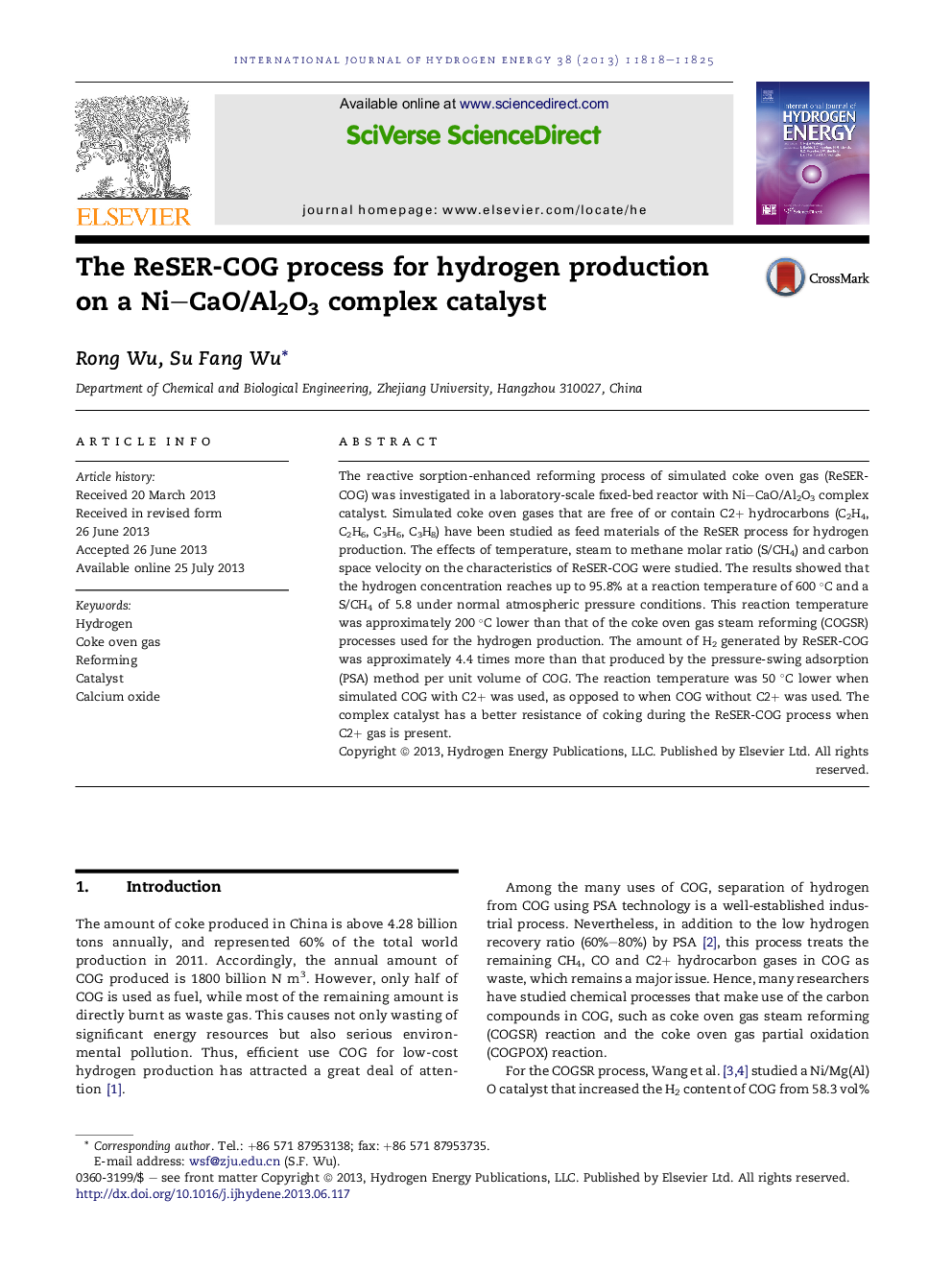| Article ID | Journal | Published Year | Pages | File Type |
|---|---|---|---|---|
| 1274898 | International Journal of Hydrogen Energy | 2013 | 8 Pages |
•H2 production by ReSER-COG process over Ni–CaO/Al2O3 complex catalyst.•H2 concentration reaches up to 95.8% at a reaction temperature of 600 °C.•ReSER-COG has 200 °C lower temperature than without sorption enhanced processes.•The H2 yield generated by ReSER-COG was 4.4 times than by PSA method.
The reactive sorption-enhanced reforming process of simulated coke oven gas (ReSER-COG) was investigated in a laboratory-scale fixed-bed reactor with Ni–CaO/Al2O3 complex catalyst. Simulated coke oven gases that are free of or contain C2+ hydrocarbons (C2H4, C2H6, C3H6, C3H8) have been studied as feed materials of the ReSER process for hydrogen production. The effects of temperature, steam to methane molar ratio (S/CH4) and carbon space velocity on the characteristics of ReSER-COG were studied. The results showed that the hydrogen concentration reaches up to 95.8% at a reaction temperature of 600 °C and a S/CH4 of 5.8 under normal atmospheric pressure conditions. This reaction temperature was approximately 200 °C lower than that of the coke oven gas steam reforming (COGSR) processes used for the hydrogen production. The amount of H2 generated by ReSER-COG was approximately 4.4 times more than that produced by the pressure-swing adsorption (PSA) method per unit volume of COG. The reaction temperature was 50 °C lower when simulated COG with C2+ was used, as opposed to when COG without C2+ was used. The complex catalyst has a better resistance of coking during the ReSER-COG process when C2+ gas is present.
